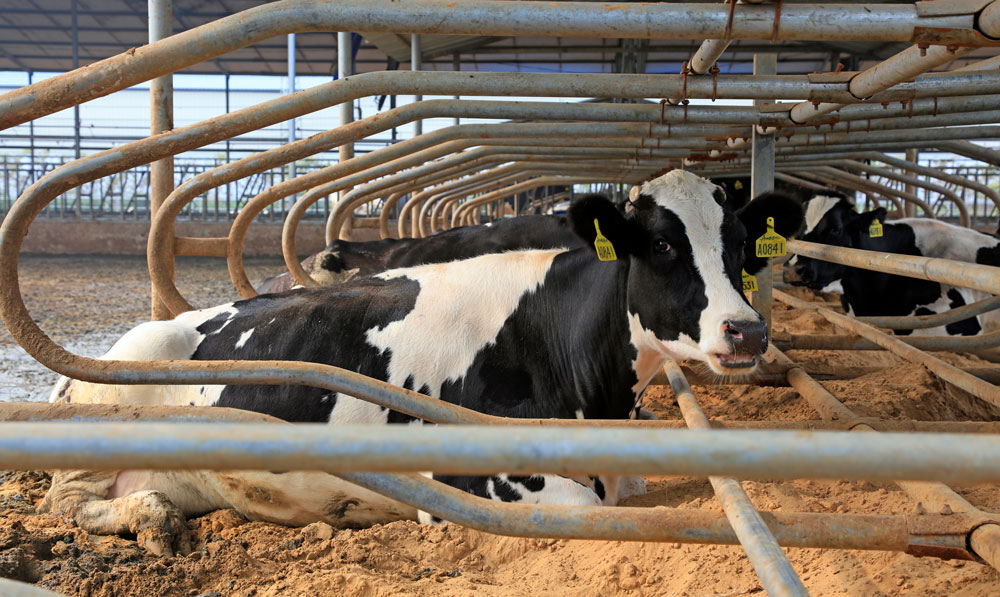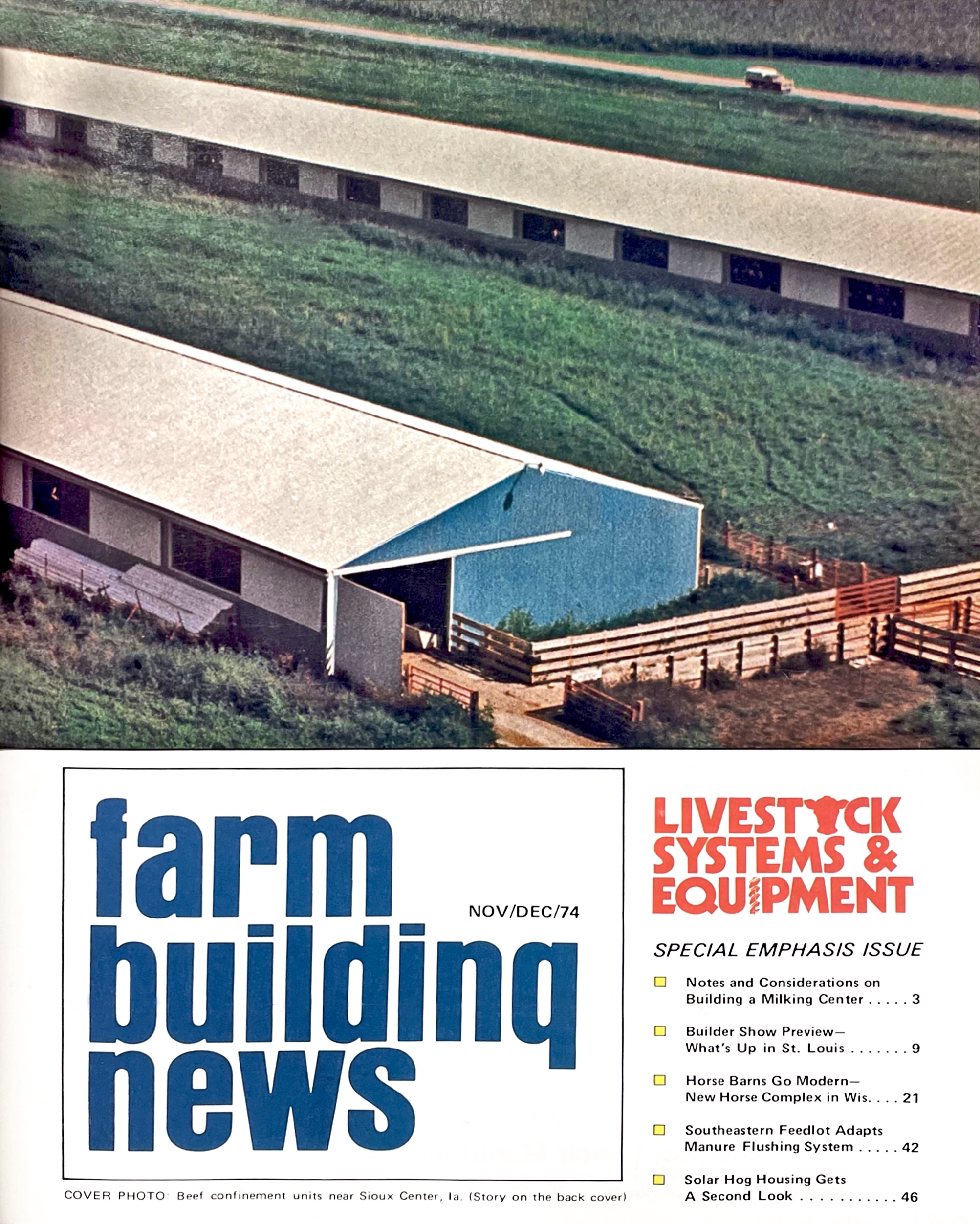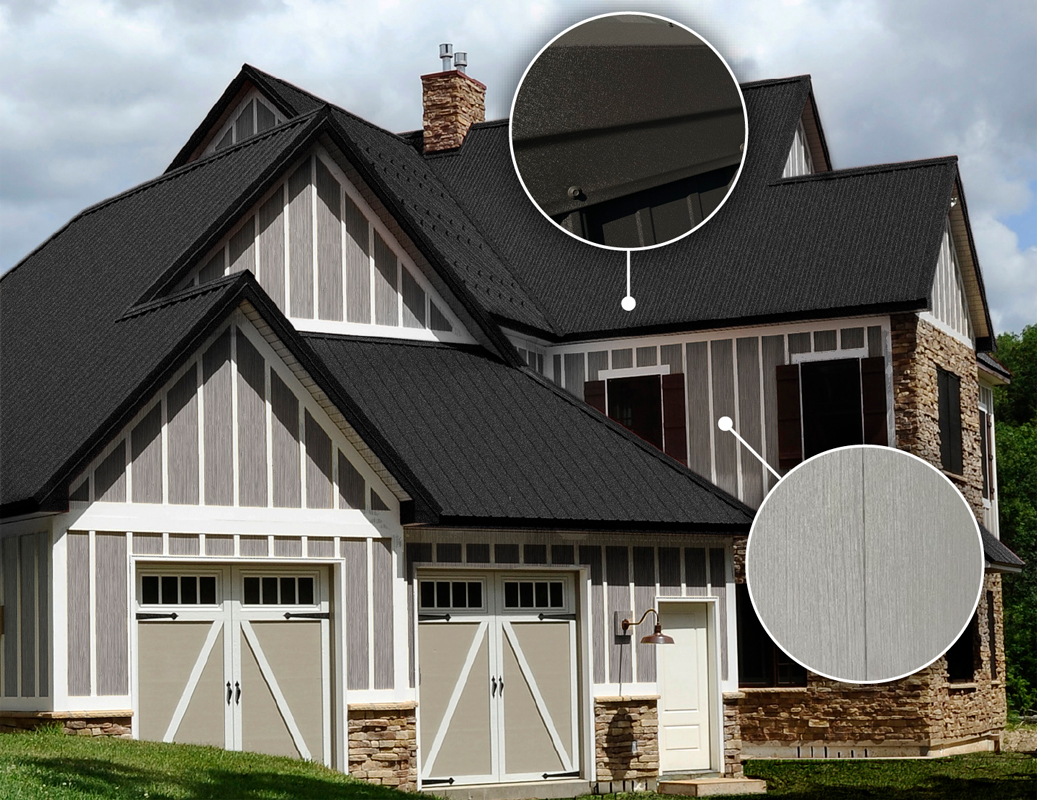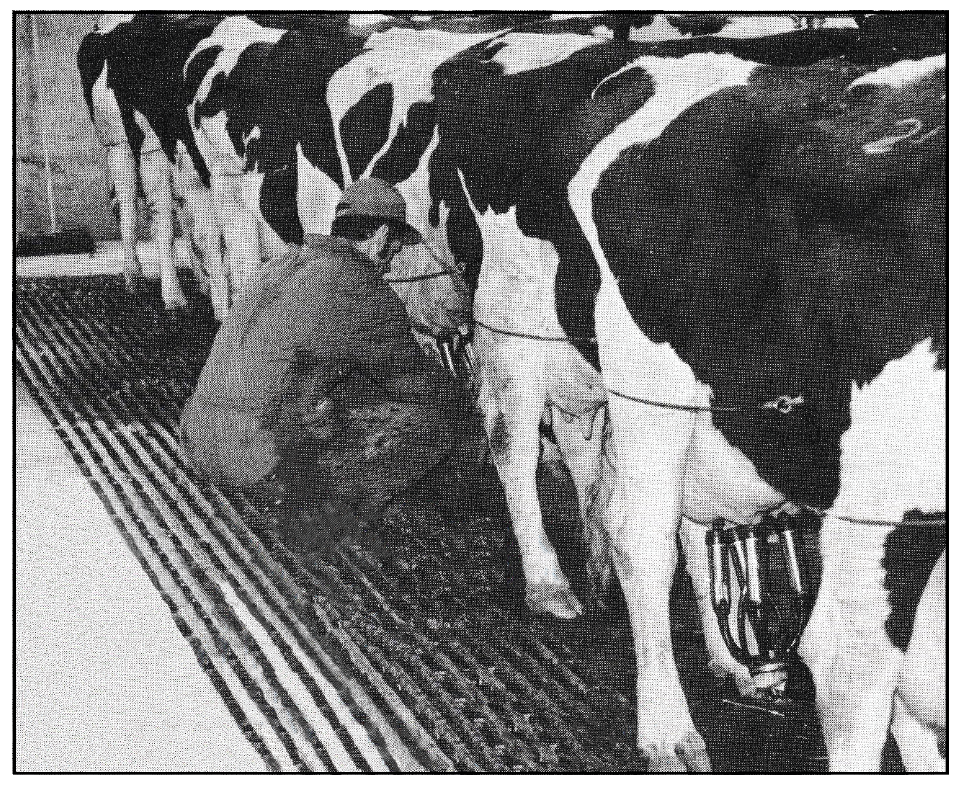Whether you are building new or retrofitting a building for livestock, there are choices to be made about flooring. These choices should likely be driven by the type of livestock that will use the building, the particular use (living, loafing, milking … ), your environment, and what type of bedding and manure handling you intend to use. There are more flooring options out there than you can shake a stick at, but many of them are variations on a theme and all of them center on a few key choices that you will need to make.
Let’s start with livestock and a little about traction or foot consideration. Animals such as cattle and pigs are significantly heavier than poultry or other critters and require a bit more substance to their floors. Also animals with hooves (goats excluded on the count that they are crazy and defy all norms) are not really designed for hard slick floors.
So traction and consideration of the animals’ feet is important in floor selection. With poultry this means that if you wish to have a floor that lets manure fall through the holes can’t be too big, well … because of chicken feet. You don’t want those toes getting caught and causing an injury.
With large animals such as cattle, traction can be achieved with grooved concrete in areas where they come and go routinely. But don’t expect those grooves to last if you are routinely running a skid-steer through and removing manure where they are. Simply put, the animals’ size and what their feet are like needs to factor in to flooring choices.
The High-End Option
Concrete floors are the gold standard, but they are not your only choice and there may be better options depending on what you are planning. Bill Koepke, small livestock operator and farmer in Marion, Wisconsin, shared that in his bull barn they simply used limestone screenings that were quite cheap and ultimately packed in really hard and made a nice floor. This type of flooring was used in a small building, though, without a lot of coming and going and only a couple animals at a time.
In contrast to this, Bill has concrete in his pig building and uses a significant amount of bedding in the form of straw and shavings to both stabilize his manure and provide cushion to the animals feet while promoting good hygiene.
A world away in Kansas, Nate Heinen, contractor and “pig logistics manager” (he doesn’t like the pigs but his wife does), uses a slatted floor over a concrete floor with a drain so that he can flush manure easily with water. Initially Nate had a dirt floor building and used lots of bedding for those pigs which really hardened up when it got dry and was quite difficult to manage.

Contrast these uses with poultry where you can get away with a dirt floor and you can see why the type of livestock matters quite a bit. In short, chickens are small and a dirt floor for them doesn’t present a big problem.
The Dirt on Dirt
Now that you’ve heard a few anecdotes to add to your own experience, let’s get into some details. Once you have decided what livestock may be in your building your next step is something that isn’t really your choice and that is the environment or the weather and soils where you are. A dirt floor building is an option in dry environments but might be a bit trickier in wetter climates. If you go this route you had better have a solid compacted dirt pad with a grade leading away from your building. If that is the case then a dirt floor can work for you.
Just remember that winter can be wet and messy too as snow may get tracked in and out of that building. What you might be able to get away with in dry airy Nebraska may not work so well in Minnesota. Once again … concrete is the gold standard.
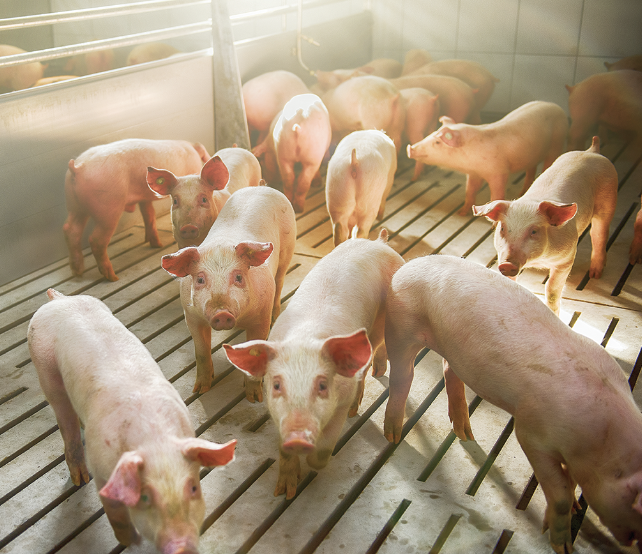
Manure and bedding Factors
The next consideration is how you intend to handle manure, or mainly whether you intend to use bedding and what kind. Personally, I think that bedding is really important for animals and that it should be used liberally to both promote good hygiene and stabilize manure to make the best possible composted manure that you can later apply to your land. Bedding is going to provide cushion and build up a bit of bed pack manure that actually composts in place and provides some heat as well.
Straw and wood shavings are common bedding types. While both of these do a good job with hygiene and stabilizing manure, they do have to be sourced and they do add bulk to manure, which does create some handling challenges later. Alternatives to the use of organic bedding are things like sand and rubber stall mats or rubber flooring. Sand doesn’t do much to stabilize manure, but it is quite hygienic. Sand still might be a good choice as it does provide cushion, can be reused after washing, and adds less bulk, ultimately, to manure when it is time to land spread it.
Why all this bedding talk? Well, this works best on concrete floors where bedding and manure can be scraped out with a loader or shovel (there are some rubber flooring options that with a bit of care can work this way, too). One caveat is that you can do this with a dirt floor, too, but you just have to take care that you don’t dig a hole in your compacted dirt pad. The synopsis here is that concrete is probably your best choice if you plan to use bedding, particularly organic-type bedding.
What if you don’t want to use bedding and you want to be able to just flush that manure away? There are options for this, too. For poultry this might look like a wire mesh floor (quarter inch holes) with something under it to catch the droppings (some people use wooden boards but a dirt floor could work or concrete may be desirable in larger scale operations). With larger animals such as pigs, a slatted floor (there are plastic, cast iron and concrete options) elevated above a concrete pit or floor with a drain can be a good option.
PROS AND CONS OF RUBBER MATS
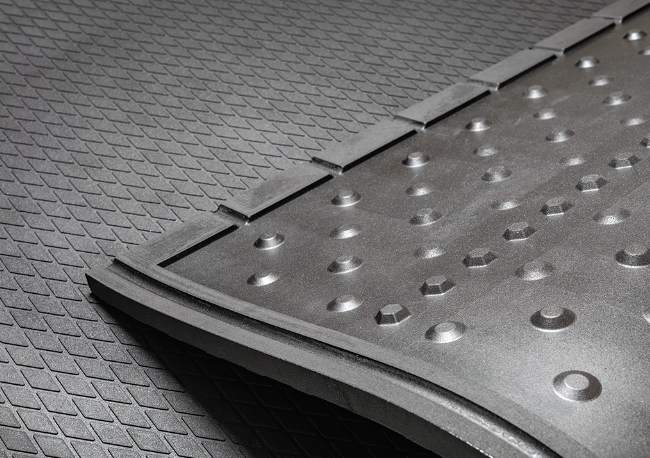
If the animals are larger still, then a concrete floor with some pitch that runs to slatted areas draining into a pit can work as well. When you go to these options that manure can be flushed through and you aren’t using bedding there is a need to provide some cushion to the feet of the animals. You have probably stood on concrete for a while before and know that it can be rough on the joints. The animals feel this, too. So, if you have a hard floor and aren’t going to use bedding, then rubber stall mats may be in order for you. While these rubber mats do help the animals they can get quite nasty so regular cleaning will be required.
There are also slatted flooring types that incorporate some cushion using rubber coated slats with some significant upsides. The rubber coating not only provides cushion and increases traction, but it has the added benefit of decreased manure retention in the winter when manure might freeze on other slatted floor types. Strategic use of sand bedding in certain areas can work with concrete floored flushing type systems without having to change the sand too often, and for many central Wisconsin dairies this is a common system. In addition, there are rubber floors that can be added over concrete slatted floors to provide cushion and traction while facilitating flushing at the same time.
Whatever flooring type you end up choosing expense will also be a factor in the end. Remembering the old adage of buy once, cry once may help here, though. Getting set up and doing it right the first time is often better than trying to use a cheaper alternative that doesn’t quite fit your needs.
Similarly a building with a manure pit under it and a flushing type manure handling system with a slatted floor may be excessively expensive for a smaller operation. Consider the scale, the livestock, the cost, and the availability of bedding materials to pick your best option. RB

